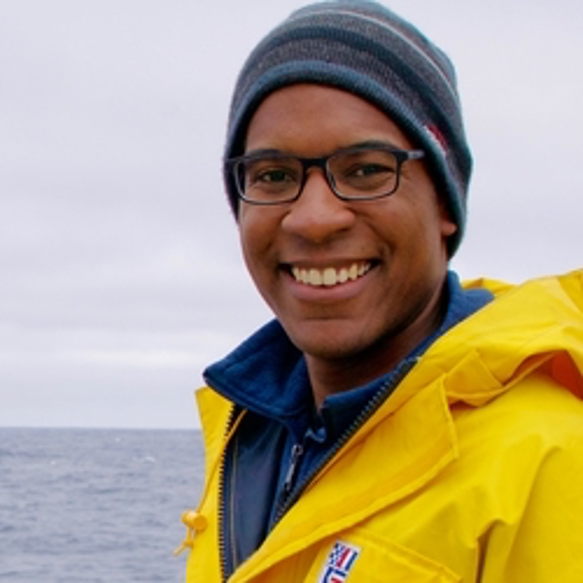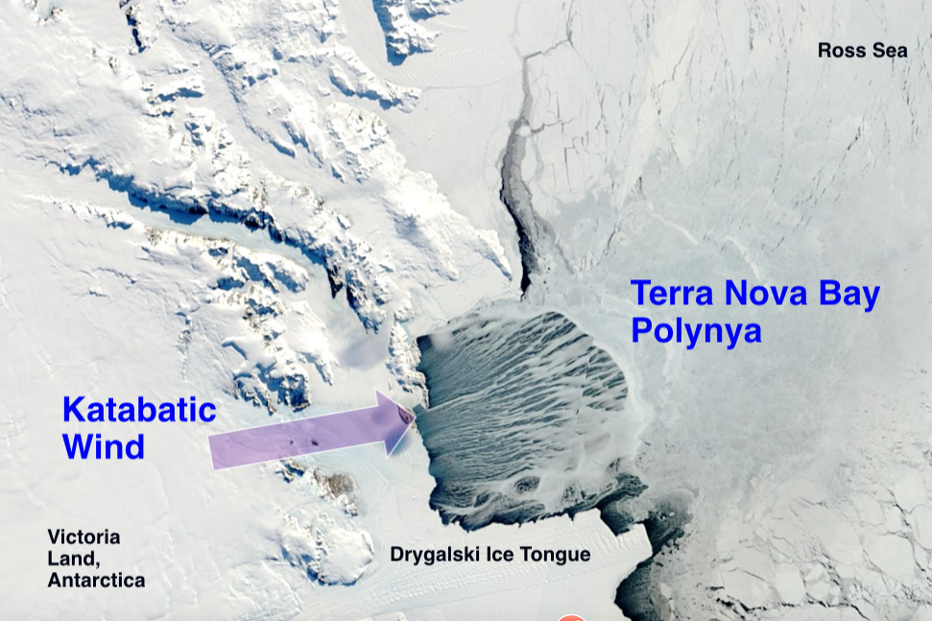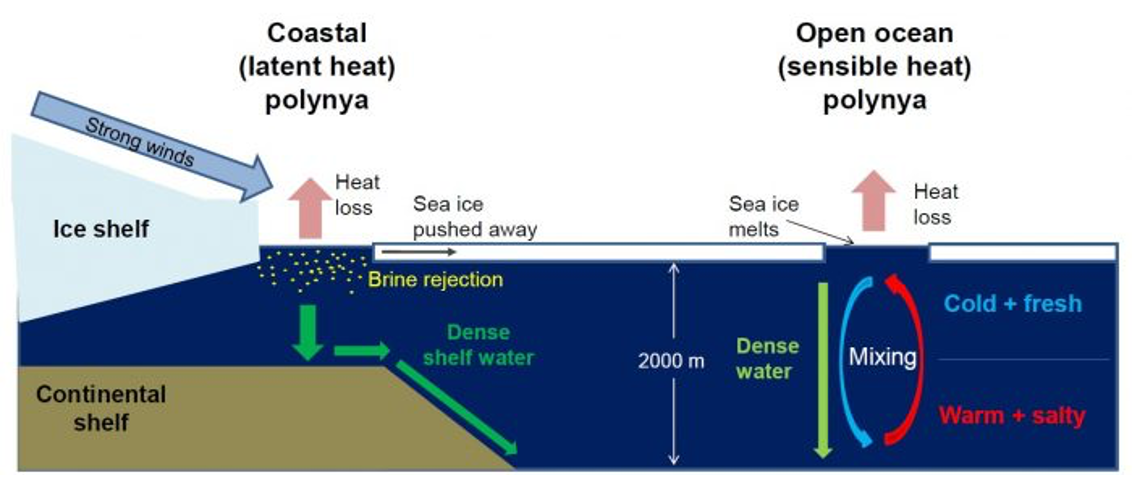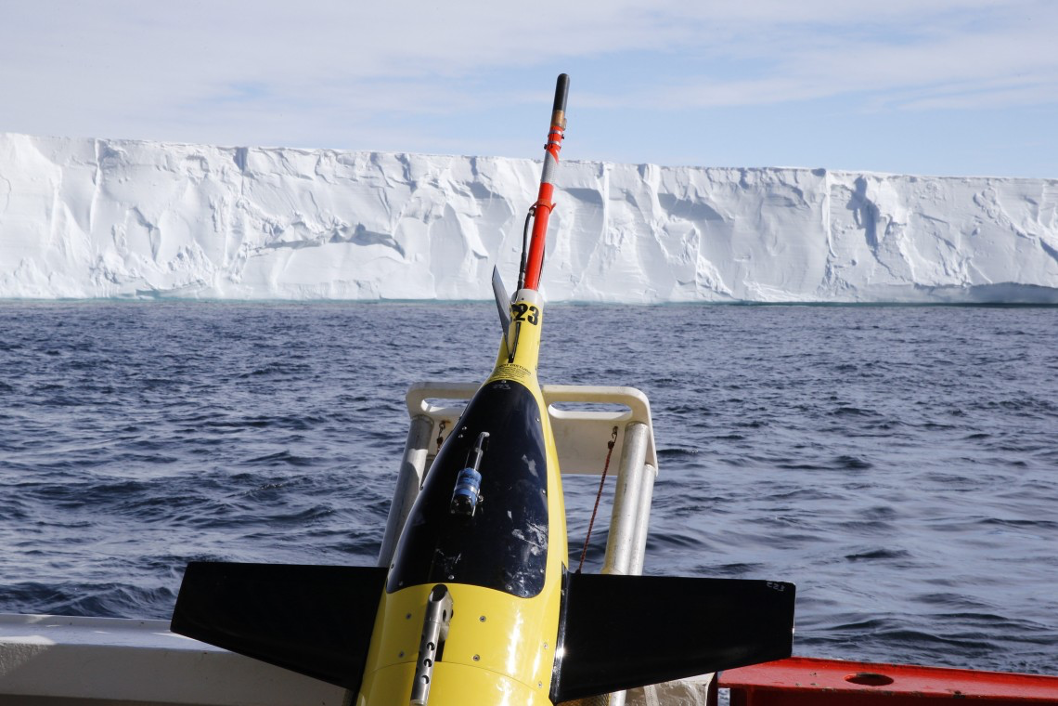About Dr. Earle Wilson

Dr. Earle Wilson is a postdoctoral scholar at Caltech. He received a bachelors in applied physics from Columbia University and a PhD in physical oceanography from the University of Washington, working with Stephen Riser. Dr. Wilson’s research is focused on polar oceanography, ice-ocean interactions, and global overturning circulation. He is also a science communication fellow at the Seattle Pacific Science Center. To learn more about Dr. Wilson’s research, check out his website.
This post is in support of #BlackInMarineScience week highlighting Black scientists who have contributed to and are currently working in the marine science field. To find out more visit https://blackinmarsci.github.io/index.html.
A Window into the Ocean
When 19th century explorers first ventured into the frigid climates of the North and South Poles, they found something curious: in the midst of wastelands of frozen sea ice, there appeared gaping holes of open water where no sea ice would form. These openings in the sea ice were dubbed “polynyas,” derived from the Russian word for natural ice holes. Polynyas have since sparked countless oceanographers and polar scientists to understand their mechanisms and how they affect the polar environments.

Today, we classify these ice holes into two categories: coastal polynyas and open ocean polynyas. Coastal polynyas can be found year-round off the coast of Antarctica and Greenland and are formed by strong winds coming from land that continually push ice away. Open ocean polynyas, however, are less well understood because they appear only for a few months at most, and then disappear. Scientists theorize that open ocean polynyas are caused by increased mixing of surface and deep waters under the ice. But because of their temporary nature and inaccessibility, no one has been able to prove any theories.

Polynyas play an important role in the climate system, acting as gaps for heat to escape from the warm ocean beneath the sea ice to the cold frigid air above. Understanding how the open ocean polynyas are formed, and whether their presence will change in the 21st century in response to climate change, is crucial.
Dr. Wilson and others at the University of Washington made breakthroughs in understanding open ocean polynyas. In the winters of 2016 and 2017, some of the largest open ocean polynyas appeared in the Weddell Sea in Antarctica. Luckily Dr. Wilson’s team had deployed underwater sensors below these polynyas years before and were able to make some of the first real time seawater measurements of the ocean interior during an open ocean polynya This kind of data is a first, and led to their Nature publication in 2019.
More ice more problems
Polynyas only occur in the Arctic and Antarctic, making them a challenge to observe and study. Ships rarely sail through these waters and satellite imagery is limited by storms and long winter nights. Scientists have developed clever ways of making underwater measurements in the polar oceans, such as strapping sensor caps onto elephant seals.

Another important way scientists are making measurements in these frigid waters is by dropping autonomous floats into the ocean, which record years of information about local conditions. Three of these autonomous floats were dropped into the Weddell Sea from 2011 to 2018. The data they collected in 2016 to 2017 below the open ocean polynyas was unprecedented and crucial to their study.
The recipe calls for salt and winds
Dr. Wilson and co-authors found that in the months leading up to the 2016 polynya, the upper ocean mixed layer was much saltier and warmer than usual. This was evidence that warm salty water from deep below was upwelled to the shallower depths. The authors believed that this upwelled water “preconditioned” the region for polynya formation later. In late July and early August, two intense storms came into the region, their strong winds causing more ocean convection that finally led to the large polynya in mid-August of 2016. In 2017, the strong mixing from the previous year’s polynya preconditioned the surface waters, and subsequent storms also led to the even bigger open ocean polynya that year.
Global climate models have suggested that open ocean polynyas form when heat built up in the deep polar oceans spontaneously is released to the surface waters, melting the ice from below. The results from these observations show that this heat accumulation method is probably not the cause of these polynyas. Instead, upwelling of salt water and storms are probably the contributing factors.
Polynyas into the future
These direct observations of the ocean subsurface during an open ocean polynya are unique. They helped confirm that upwelling of deep salty-warm waters plays an important role in creating open ocean polynyas, and also confirmed that storms also play a role. We learned that current global climate models are producing these polynyas incorrectly, and that we should make adjustments to represent them more accurately in models.
In addition to being an important interface for heat transfer, polynyas are also important to marine ecosystems. In the winter many species of marine mammals remain near polynyas to surface for air and some penguins rely on them for food. Climate data suggest that storms in Antarctica will increase as a result of global warming, which could mean that we would expect more open ocean polynyas in the future. If this is true, then this could profoundly impact not only our climate but also various organisms that live in polar environments.
I am a PhD student studying climate physics and marine geology at MIT and Woods Hole Oceanographic Institution. I am interested in using geochemical methods and climate models to study periods of rapid climate change in the past and understanding the ocean’s role in our climate system. In my free time I enjoy tennis, boardgames, and recreating my favorite asian foods at home.
